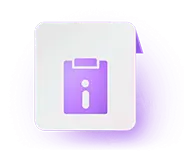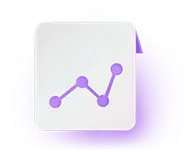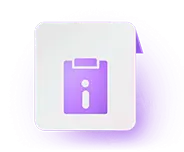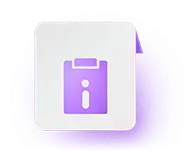Do you ever wonder why all the famous novels are being made into movies these days? This is because most people prefer to watch movies...

8th ICSE Chapter
October 24, 2024
Delhi Board Class 12 exams are one of the most crucial exams for students in Delhi as they determine their admission into some of the top universities in the country. The Delhi Board of Senior Secondary Education conducts the Class 12 exams annually in the month of March. These exams are known for their rigorous curriculum and high standards, which prepare students for higher education and future career prospects. The Class 12 exams are an important milestone in a student’s academic journey as they pave the way for higher studies and open doors to numerous career opportunities.
The Delhi Board Class 12 exams cover a wide range of subjects such as Mathematics, Physics, Chemistry, Biology, Accountancy, Economics, Business Studies, English, and many more. The exams are held in various centers across the city, and students must appear for the exams at the designated centers on the scheduled dates. The results of the exams are crucial as they determine the eligibility of students for admission into colleges and universities

Delhi Board conducts exams for all the students registered for class 12 without the restriction of age, sex, caste, country. The medium of the question paper is in English or Hindi for all the subjects apart from language. The maximum marks for each subject are 100. Exams will be conducted annually for the 2023 session. It is advisable that the students follow the rules and regulations of the Board and prepare for the exams accordingly.


Exam Dates to be announced.

The Education Department, Govt. of NCT of Delhi, conducts exams for all enrolled students of class 12. The candidate scoring a minimum of 33% in each subject is considered a pass in the class 12 Delhi Board exam.
Board of Higher Secondary Education (BHSE), Delhi, Class 12 Exam is pen-paper based. Students are evaluated on the basis of their term and Internal Assessment/practical/project works marks.

Class 12, Board of Higher Secondary Examination, Delhi, has Urdu, English, Hindi, Sanskrit, Accountancy, Biology, Business Studies, Chemistry, Computer Science, Economics, Geography, Home Science, History, Mathematics, Engineering Graphics, Physics, Physical Education, Political Science, Psychology and Sociology subjects in the curriculum. Students can take the subject of their choice according to Arts, Commerce and Science stream.
In the table below, candidates can find the Delhi Board Class 12 Physics syllabus
| Unit | Chapter | Topics |
|---|---|---|
| Term I | ||
| Unit I: Electrostatics | Chapter–1: Electric Charges and Fields | Electric Charges; Conservation of charge, Coulomb’s law-force between two-point charges, forces between multiple charges; superposition principle and continuous charge distribution. Electric field, electric field due to a point charge, electric field lines, electric dipole, electric field due to a dipole, torque on a dipole in the uniform electric field. Electric flux, statement of Gauss’s theorem and its applications to find field due to infinitely long straight wire, uniformly charged infinite plane sheet |
| Chapter–2: Electrostatic Potential and Capacitance | Electric potential, potential difference, electric potential due to a point charge, a dipole and system of charges; equipotential surfaces, electrical potential energy of a system of two-point charges and of electric dipole in an electrostatic field. Conductors and insulators, charges and bound charges inside a conductor. Dielectrics and electric polarisation, capacitors and capacitance, combination of capacitors in series and in parallel, capacitance of a parallel plate capacitor with and without dielectric medium between the plates, energy stored in a capacitor. | |
| Unit II: Current Electricity | Chapter–3: Current Electricity | Electric current, flow of electric charges in a metallic conductor, drift velocity, mobility and their relation with electric current; Ohm’s law, electrical resistance, V-I characteristics (linear and nonlinear), electrical energy and power, electrical resistivity and conductivity; temperature dependence of resistance. Internal resistance of a cell, potential difference and emf of a cell, combination of cells in series and in parallel, Kirchhoff’s laws and simple applications, Wheatstone bridge, metre bridge(qualitative ideas only). Potentiometer – principle and its applications to measure potential difference and for comparing EMF of two cells; measurement of internal resistance of a cell (qualitative ideas only) |
| Unit III: Magnetic Effects of Current and Magnetism | Chapter–4: Moving Charges and Magnetism | Concept of magnetic field, Oersted’s experiment. Biot – Savart law and its application to current carrying circular loop. Ampere’s law and its applications to infinitely long straight wire. Straight and toroidal solenoids (only qualitative treatment), force on a moving charge in uniform magnetic and electric fields. Force on a current-carrying conductor in a uniform magnetic field, force between two parallel current-carrying conductors-definition of ampere, torque experienced by a current loop in uniform magnetic field; moving coil galvanometer-its current sensitivity and conversion to ammeter and voltmeter. |
| Chapter–5: Magnetism and Matter | Current loop as a magnetic dipole and its magnetic dipole moment, magnetic dipole moment of a revolving electron, bar magnet as an equivalent solenoid, magnetic field lines; earth’s magnetic field and magnetic elements. | |
| Unit IV: Electromagnetic Induction and Alternating Currents | Chapter–6: Electromagnetic Induction | Electromagnetic induction; Faraday’s laws, induced EMF and current; Lenz’s Law, Eddy currents. Self and mutual induction. |
| Chapter–7: Alternating Current | Alternating currents, peak and RMS value of alternating current/voltage; reactance and impedance; LC oscillations (qualitative treatment only), LCR series circuit, resonance; power in AC circuits. AC generator and transformer. | |
| Unit V: Electromagnetic Waves | Chapter–8: Electromagnetic Waves | Electromagnetic waves, their characteristics, their Transverse nature (qualitative ideas only). Electromagnetic spectrum (radio waves, microwaves, infrared, visible, ultraviolet, X-rays, gamma rays) including elementary facts about their uses. |
| Unit VI: Optics | Chapter–9: Ray Optics and Optical Instruments | Ray Optics: Refraction of light, total internal reflection and its applications, optical fibers, refraction at spherical surfaces, lenses, thin lens formula, lensmaker’s formula, magnification, power of a lens, combination of thin lenses in contact, refraction of light through a prism. Optical instruments: Microscopes and astronomical telescopes (reflecting and refracting) and their magnifying powers. |
| Chapter–10: Wave Optics | Wave front and Huygen’s principle, reflection and refraction of plane wave at a plane surface using wave fronts. Proof of laws of reflection and refraction using Huygen’s principle. Interference, Young’s double slit experiment and expression for fringe width, coherent sources and sustained interference of light, diffraction due to a single slit, width of central maximum | |
| Unit VII: Dual Nature of Radiation and Matter | Chapter–11: Dual Nature of Radiation and Matter | Dual nature of radiation, Photoelectric effect, Hertz and Lenard’s observations; Einstein’s photoelectric equation-particle nature of light. Experimental study of photoelectric effect Matter waves-wave nature of particles, de-Broglie relation |
| Unit VIII: Atoms and Nuclei | Chapter–12: Atoms | Alpha-particle scattering experiment; Rutherford’s model of atom; Bohr model, energy levels, hydrogen spectrum. |
| Chapter–13: Nuclei | Composition and size of nucleus Nuclear force Mass-energy relation, mass defect, nuclear fission, nuclear fusion. | |
| Unit IX: Electronic Devices | Chapter–14: Semiconductor Electronics: | Materials, Devices and Simple Circuits, Energy bands in conductors, semiconductors and insulators (qualitative ideas only) Semiconductor diode – I-V characteristics in forward and reverse bias, diode as a rectifier; Special purpose p-n junction diodes: LED, photodiode, solar cell. |
The Delhi Board Class 12 Chemistry syllabus is as follows
| Chapter No. | Chapter | Topics |
|---|---|---|
| 1 | Solid State | Classification of solids based on different binding forces: molecular, ionic, covalent and metallic solids, amorphous and crystalline solids (elementary idea). Unit cell in two dimensional and three dimensional lattices, calculation of density of unit cell, packing in solids, packing efficiency, voids, number of atoms per unit cell in a cubic unit cell, point defects. |
| 2 | Solutions | Types of solutions, expression of concentration of solutions of solids in liquids, solubility of gases in liquids, solid solutions, Raoult’s law, colligative properties – relative lowering of vapour pressure, elevation of boiling point, depression ofzing point, osmotic pressure, determination of molecular masses using colligative properties. |
| 3 | p-Block Elements | Group -15 Elements: General introduction, electronic configuration, occurrence, oxidation states, trends in physical and chemical properties; Nitrogen preparation properties and uses; compounds of Nitrogen: preparation and properties of Ammonia and Nitric Acid. Group 16 Elements: General introduction, electronic configuration, oxidation states, occurrence, trends in physical and chemical properties, dioxygen: preparation, properties and uses, classification of Oxides, Ozone, Sulphur -allotropic forms; compounds of Sulphur: preparation properties and uses of Sulphur-dioxide, Sulphuric Acid: properties and uses; Oxoacids of Sulphur (Structures only). Group 17 Elements: General introduction, electronic configuration, oxidation states, occurrence, trends in physical and chemical properties; compounds of halogens, Preparation, properties and uses of Chlorine and Hydrochloric acid, interhalogen compounds, Oxoacids of halogens (structures only). Group 18 Elements: General introduction, electronic configuration, occurrence, trends in physical and chemical properties, uses. |
| 4 | Haloalkanes and Haloarenes | Haloalkanes: Nomenclature, nature of C–X bond, physical and chemical properties, optical rotation mechanism of substitution reactions. Haloarenes: Nature of C–X bond, substitution reactions (Directive influence of halogen in monosubstituted compounds only). |
| 5 | Alcohols, Phenols and Ethers | Alcohols: Nomenclature, methods of preparation, physical and chemical properties (of primary alcohols only), identification of primary, secondary and tertiary alcohols, mechanism of dehydration. Phenols: Nomenclature, methods of preparation, physical and chemical properties, acidic nature of phenol, electrophilic substitution reactions, uses of phenols. Ethers: Nomenclature, methods of preparation, physical and chemical properties, uses. |
| 6 | Biomolecules | Carbohydrates – Classification (aldoses and ketoses), monosaccharides (glucose and fructose), D-L configuration Proteins -Elementary idea of – amino acids, peptide bond, polypeptides, proteins, structure of proteins – primary, secondary, tertiary structure and quaternary structures (qualitative idea only), denaturation of proteins. Nucleic Acids: DNA and RNA |
| 1 | Electrochemistry | Redox reactions, EMF of a cell, standard electrode potential, Nernst equation and its application to chemical cells, Relation between Gibbs energy change and EMF of a cell, conductance in electrolytic solutions, specific and molar conductivity, variations of conductivity with concentration, Kohlrausch’s Law, electrolysis. |
| 2 | Chemical Kinetics | Rate of a reaction (Average and instantaneous), factors affecting rate of reaction: concentration, temperature, catalyst; order and molecularity of a reaction, rate law and specific rate constant, integrated rate equations and half-life (only for zero and first order reactions). |
| 3 | Surface Chemistry | Adsorption – physisorption and chemisorption, factors affecting adsorption of gases on solids, colloidal state: distinction between true solutions, colloids and suspension; lyophilic, lyophobic, multi-molecular and macromolecular colloids; properties of colloids; Tyndall effect, Brownian movement, electrophoresis, coagulation. |
| 4 | d-and f-Block Elements | General introduction, electronic configuration, occurrence and characteristics of transition metals, general trends in properties of the first row transition metals – metallic character, ionization enthalpy, oxidation states, ionic radii, colour, catalytic property, magnetic properties, interstitial compounds, alloy formation. Lanthanoids – Electronic configuration, oxidation states and lanthanoid contraction and its consequences. |
| 5 | Coordination Compounds | Coordination compounds – Introduction, ligands, coordination number, colour, magnetic properties and shapes, IUPAC nomenclature of mononuclear coordination compounds. Bonding, Werner’s theory, VBT, and CFT. |
| 6 | Aldehydes, Ketones and Carboxylic Acids | Aldehydes and Ketones: Nomenclature, nature of carbonyl group, methods of preparation, physical and chemical properties, mechanism of nucleophilic addition, reactivity of alpha hydrogen in aldehydes, uses. Carboxylic Acids: Nomenclature, acidic nature, methods of preparation, physical and chemical properties; uses. |
| 7 | Amines | Nomenclature, classification, structure, methods of preparation, physical and chemical properties, uses, identification of primary, secondary and tertiary amines. |
Refer to the table below for Delhi Board Class 12 Maths syllabus
| Delhi Board Class 12 Syllabus for Mathematics | ||
|---|---|---|
| Unit | Chapter | Topics |
| Unit-I: Relations and Functions | Relations and Functions | Types of relations: reflexive, symmetric, transitive and equivalence relations. One to one and onto functions. |
| Inverse Trigonometric Function | Definition, range, domain, principal value branch. | |
| Unit-II: Algebra | Matrices | Concept, notation, order equality, types of matrices, zero and identity matrix, transpose of a matrix, symmetric and skew symmetric matrices. Operation on matrices: Addition and multiplication and multiplication with a scalar. Simple properties of addition, multiplication and scalar multiplication. Noncommutativity of multiplication of matrices, invertible matrices; (Here all matrices will have real entries). |
| Determinants | Determinants of square matrix (upto 3 x 3 matrices), minors, co- factors and applications of determinants in finding the area of triangle. Adjoint and inverse of a square matrix. Solving a system of linear equations in two or three variables (having unique solution) using the inverse of the matrix. | |
| Unit-III: Calculus | Continuity and Differentiability | Continuity and differentiability, derivative of composite functions, chain rule, derivatives of inverse trigonometric functions. Derivative of implicit functions. Concept of logarithmic and exponential functions. Logarithmic differentiation, derivative of functions expressed in parametric forms. Second order derivatives. |
| Applications of Derivatives | Applications of derivatives: increasing/decreasing functions, tangents and normal, maxima and minima (first derivative test motivated geometrically and second derivative test given as a provable tool). Simple problems (that illustrate basic principles and understanding of the subject as well as real-life situations). | |
| Unit-V: Linear Programming | Linear Programming | Introduction, related terminology such as constraints, objective function, optimization, different types of linear programming (L.P.) problems, graphical method of solution for problems in two variables, feasible and infeasible regions(bounded ), feasible and infeasible solutions, optimal feasible solutions (up to three non-trivial constraints) |
| Term II | ||
| Unit-III: Calculus | Integrals | Integration as inverse process of differentiation. Integration of a variety of functions by substitution, by partial fractions and by parts, Evaluation of simple integrals of the following types and problems based on them Fundamental Theorem of Calculus (without proof).Basic properties of definite integrals and evaluation of definite integrals. |
| Applications of theIntegrals | Applications in finding the area under simple curves, especially lines, circles/parabolas/ellipses (in standard form only), (the region should be clearly identifiable). | |
| Differential Equations | Definition, order and degree, general and particular solutions of a differential equation. Solution of differential equations by method of separation of variables solutions of homogeneous differential equations of first order and first degree of the type: Solutions of linear differential equation of the type: Where p and q are functions of x or constants. |
|
| Unit-IV: Vectors and Three-Dimensional Geometry | Vectors | Vectors and scalars, magnitude and direction of a vector. Direction cosines and direction ratios of a vector. Types of vectors (equal, unit, zero, parallel and collinear vectors), position vector of a point,negative of a vector, components of a vector, addition of vectors, multiplication of a vector by a scalar, position vector of a point dividing a line segment in a given ratio. Definition, Geometrical Interpretation, properties and application of scalar (dot) product of vectors, vector (cross) product of vectors. |
| Three- dimensional Geometry | Direction cosines and direction ratios of a line joining two points. Cartesian equation and vector equation of a line, coplanar and skew lines, shortest distance between two lines. Cartesian and vector equation of a plane. Distance of a point from a plane. | |
| Unit-VI: Probability | Probability | Conditional probability, multiplication theorem on probability, independent events, total probability, Bayes’ theorem, Random variable and its probability distribution. |
Refer to the table below for Delhi Board Class 12 Biology syllabus
| Delhi Board Class 12 Syllabus for Biology | ||
|---|---|---|
| Unit | Chapter | Topics |
| Unit-VI Reproduction | Chapter-2: Sexual Reproduction in Flowering Plants | Flower structure; development of male and female gametophytes; pollination – types, agencies and examples; outbreeding devices; pollen-pistil interaction; double fertilization; post fertilization events – development of endosperm and embryo, development of seed and formation of fruit; special modes- apomixis, parthenocarpy, polyembryony; Significance of seed dispersal and fruit formation. |
| Chapter-3: Human Reproduction | Male and female reproductive systems; microscopic anatomy of testis and ovary; gametogenesis – spermatogenesis and oogenesis; menstrual cycle; fertilisation, embryo development upto blastocyst formation, implantation; pregnancy and placenta formation (elementary idea); parturition (elementary idea); lactation (elementary idea). | |
| Chapter-4: Reproductive Health | Need for reproductive health and prevention of Sexually Transmitted Diseases (STDs); birth control – need and methods, contraception and medical termination of pregnancy (MTP); amniocentesis; infertility and assisted reproductive technologies – IVF, ZIFT, GIFT (elementary idea for general awareness). | |
| Unit-VII Genetics and Evolution | Chapter-5: Principles of Inheritance and Variation | Heredity and variation: Mendelian inheritance; deviations from Mendelism – incomplete dominance, co-dominance, multiple alleles and inheritance of blood groups, pleiotropy; elementary idea of polygenic inheritance; chromosome theory of inheritance; chromosomes and genes; Sex determination – in human being, birds and honey bee; linkage and crossing over; sex linked inheritance – haemophilia, colour blindness; Mendelian disorders in humans -thalassemia; chromosomal disorders in humans; Down’s syndrome, Turner’s and Klinefelter’s syndromes. |
| Chapter-6: Molecular Basis of Inheritance | Search for genetic material and DNA as genetic material; Structure of DNA and RNA; DNA packaging; DNA replication; Central Dogma; transcription, genetic code, translation; gene expression and regulation – lac operon; Genome, Human and rice genome projects; DNA fingerprinting. | |
| Unit-VIII Biology and Human Welfare | Chapter-8: Human Health and Diseases | Pathogens; parasites causing human diseases (malaria, dengue, chikungunya, filariasis, ascariasis, typhoid, pneumonia, common cold, amoebiasis, ring worm) and their control; Basic concepts of immunology – vaccines; cancer, HIV and AIDS; Adolescence – drug and alcohol abuse. |
| Chapter-10: Microbes in Human Welfare | Microbes in food processing, industrial production, sewage treatment, energy generation and microbes as bio-control agents and bio-fertilizers. Antibiotics; production and judicious use. | |
| Unit-IX Biotechnology and its Applications | Chapter-11: Biotechnology – Principles and Processes | Genetic Engineering (Recombinant DNA Technology). |
| Chapter-12: Biotechnology and its Application | Application of biotechnology in health and agriculture: Human insulin and vaccine production, stem cell technology, gene therapy; genetically modified organisms – Bt crops; transgenic animals; biosafety issues, biopiracy and patents. | |
| Unit-X Ecology and Environment | Chapter-13: Organisms and Populations | Organisms and environment: Habitat and niche, population and ecological adaptations; population interactions – mutualism, competition, predation, parasitism; population attributes – growth, birth rate and death rate, age distribution. |
| Chapter-15: Biodiversity and its Conservation | Biodiversity – Concept, patterns, importance; loss of biodiversity; biodiversity conservation; hotspots, endangered organisms, extinction, Red Data Book, Sacred Groves, biosphere reserves, national parks, wildlife, sanctuaries and Ramsar sites. | |

Students can find the Delhi Board Class 12 exam blueprint in the sections below:
The blueprint of Delhi Board Class 12 Physics is as follows:
| Blueprint for Delhi Board Class 12 Physics | ||
|---|---|---|
| Unit No. | Name of Units | Marks Weightage |
| I | Electrostatics Chapter 1- Electric Charges and Fields Chapter 2- Electrostatic Potential and Capacitance |
17 |
| II | Current Electricity Chapter 3- Current Electricity |
|
| III | Magnetic Effects of Current and Magnetism Chapter 4- Moving Charges and Magnetism Chapter 5- Magnetism and Matter |
18 |
| IV | Electromagnetic Induction and Alternating Currents Chapter 6- Electromagnetic Induction Chapter 7- Alternating Current |
|
| Total (Theory) | 35 | |
| Practical | 15 | |
| Grand Total | 50 | |
| V | Electromagnetic Waves Chapter 8- Electromagnetic Waves |
17 |
| VI | Optics Chapter 9- Ray Optics and Optical Instruments Chapter 10- Wave Optics |
|
| VII | Dual Nature of Matter and Radiation Chapter 11- Dual Nature of Radiation and Matter |
11 |
| VIII | Atoms and Nuclei Chapter 12- Atoms Chapter 13- Nuclei |
|
| IX | Electronic Devices Chapter 14- Semiconductor |
07 |
| Total (Theory) | 35 | |
| Practical | 15 | |
| Grand Total | 50 | |
In the table below, we have provided the blueprint for Delhi Board Class 12 Chemistry:
| Blueprint for Delhi Board Class 12 Chemistry | ||
|---|---|---|
| Chapter No. | Chapter | Marks Weightage |
| 1 | Solid State | 10 |
| 2 | Solutions | |
| 3 | p-Block Elements | 10 |
| 4 | Haloalkanes and Haloarenes | 15 |
| 5 | Alcohols, Phenols and Ethers | |
| 6 | Biomolecules | |
| Total (Theory) | 35 | |
| Practical | 15 | |
| Grand Total | 50 | |
| 1 | Electrochemistry | 13 |
| 2 | Chemical Kinetics | |
| 3 | Surface Chemistry | |
| 4 | d-and f-Block Elements | 9 |
| 5 | Coordination Compounds | |
| 6 | Aldehydes, Ketones and Carboxylic Acids | 13 |
| 7 | Amines | |
| Total (Theory) | 35 | |
| Practical | 15 | |
| Grand Total | 50 | |
In the table below, students can check out the exam blueprint of Delhi Board Class 12 Maths
| Blueprint for Delhi Board Class 12 Mathematics | ||
|---|---|---|
| Unit No. | Name of Units | Marks Weightage |
| I | Relations and Functions | 08 |
| II | Algebra | 10 |
| III | Calculus | 17 |
| V | Linear Programming | 05 |
| Total (Theory) | 40 | |
| Inter Assessment | 10 | |
| Grand Total | 50 | |
| III | Calculus | 18 |
| IV | Vectors and Three Dimensional Geometry | 14 |
| VI | Probability | 08 |
| Total (Theory) | 40 | |
| Inter Assessment | 10 | |
| Grand Total | 50 | |
Check out the Delhi Board Class 12 Biology exam blueprint below:
| Blueprint for Delhi Board Class 12 Biology | ||
|---|---|---|
| Unit No. | Title | Marks Weightage |
| 2 | Sexual Reproduction in Flowering Plants | 15 |
| 3 | Human Reproduction | |
| 4 | Reproductive Health | |
| 5 | Principles of Inheritance and Variation | 20 |
| 6 | Molecular Basis of Inheritance | |
| Total (Theory) | 35 | |
| Practical | 15 | |
| Grand Total | 50 | |
| 8 | Human Health and Diseases | 14 |
| 10 | Microbes in Human Welfare | |
| 11 | Biotechnology – Principles and Processes | 11 |
| 12 | Biotechnology and its Application | |
| 13 | Organisms and Population | 10 |
| 15 | Biodiversity and its Conservation | |
| Total (Theory) | 35 | |
| Practical | 15 | |
| Grand Total | 50 | |

Students in Delhi Board Class 12 must prepare for the exam in a proper manner. Having proper detailed study plan and preparation tips play an important role in ensuring that the students prepare for the exam in an efficient manner. This also paves the way for scoring higher marks in the exam. In the sections below, we have provided the detailed study plan and preparation tips for the students.
Students in Class 12 can pass with good grades if they prepare for their exams efficiently. As the syllabus for class 12 is extensive, students are advised to prepare their timetable and study with hardwork and sincerity to pass with flying colours.
Below we have provided some preparation tips to score good marks in Class 12 at the Delhi Board of Higher Secondary Education:
A detailed study plan is a well-structured plan created by students listing their learning goals and study time. Students must follow these carefully so that they can score good marks on the exam. Refer to the sections below for the Delhi Board Class 12 detailed study plan.

Class 12 exams for the academic year 2023 are conducted in an annual basis. Candidates can check the exam date once it is announced. The exam dates will soon be announced by the Board.

The class 12 results will be announced soon after the exams are conducted. Once the results are declared, students can download the results from the Official Website.
Results of class 12 exams are announced based on the overall performance of the students in examTo clear the class 12 Board examination, candidates must score a minimum of 33% marks on each paper. For subjects having practicals, students should score 33% in theory and practical separately. If a candidate cannot pass in all the subjects, they can write a supplementary exam and pass in all the subjects.

Q: How can I check Delhi Board Class 12th examination date?
Ans: Delhi Board Class 12th students can check the exam dates on the official website.
Q: Which are the languages offered by the Delhi Board for class 12?
Ans: The languages offered by the Delhi board for class 12th are English, Hindi, Sanskrit, and Urdu.
Q: Where can I get the Delhi board official syllabus for Class 12?
Ans. Students can download the official syllabus for Class 12 on the official website.
Q: How should I start my preparation for Delhi Board Class 12?
Ans. From day one, learn and revise the topics taught in the class. Start the revision with some simple topics and then go to the moderate to difficult level.
Q: From where I can get the Class 12 Term I exam date sheet?
Ans: Exam Date Sheet details of Term I exams of Class 12 can be found in this article.

Some of the prominent schools for educational institutions for Delhi board Class 12 include:

After clearing their Class 12 exams, students must ensure that they follow all the details. Students must appear for the competitive exams that will allow them to score more marks in the examination. These include the following:
| Stream | Exam |
|---|---|
| Engineering | Joint Entrance Examination (JEE) Main JEE Advanced Birla Institute of Technology and Science Admission Test (BITSAT) entrance exam COMED-K IPU-CET (B. Tech) Manipal (B. Tech) VITEEE AMU (B. Tech) NDA Entrance with PCM (MPC) |
| Medical | National Eligibility Cum Entrance Test (NEET) AIIMS JIPMER |
| Defence Services | Indian Maritime University Common Entrance Test Indian Navy B.Tech Entry Scheme Indian Army Technical Entry Scheme (TES) National Defence Academy and Naval Academy Examination (I) |
| Fashion and Design | National Institute of Fashion Technology (NIFT) Entrance Test National Institute of Design Admissions All India Entrance Examination for Design (AIEED) Symbiosis Institute of Design Exam Footwear Design and Development Institute Maeer’s MIT Institute of Design National Institute of Fashion Design National Aptitude Test in Architecture Center for Environmental Planning and Technology (CEPT) |
| Social Sciences | Banaras Hindu University Exam IIT Madras Humanities and Social Sciences Entrance Examination (HSEE) TISS Bachelors Admission Test (TISS-BAT) |
| Law | Common-Law Admission Test All India Law Entrance Test (AILET) |
| Science | Kishore Vaigyanik Protsahan Yojana (KVPY) National Entrance Screening Test (NEST) |
| Mathematics | Indian Statistical Institute Admission Admissions to Universities Various B.Sc Programs Banasthali Vidyapith Admission |